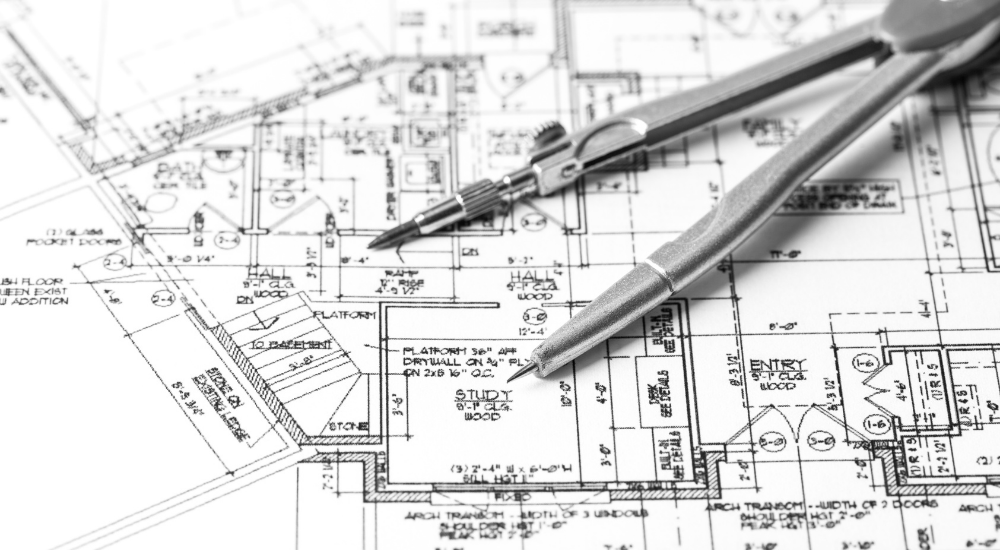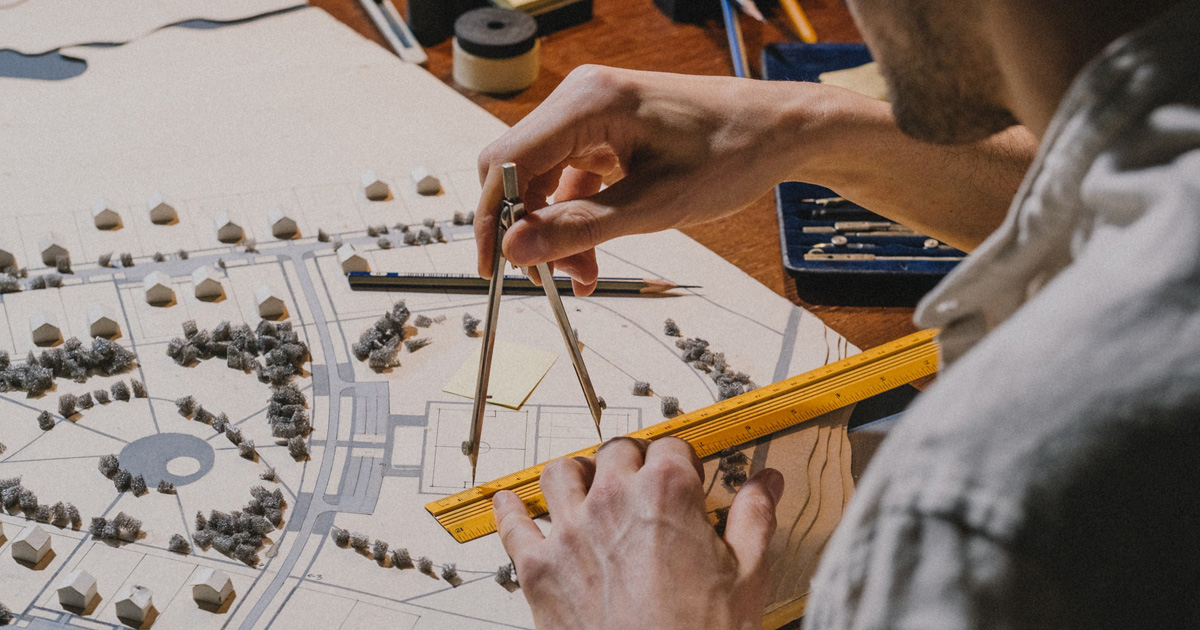Architect Services Detailed: What to Expect from A to Z
Architect Services Detailed: What to Expect from A to Z
Blog Article
Recognizing the Diverse Profession Paths Available for Aspiring Architect
As a hopeful Architect, you have a world of profession paths awaiting you. Each path offers unique obstacles and chances to use your imagination and technical expertise. Whether you're attracted to typical style or the subtleties of sustainable style, there's a specific niche that aligns with your passions. Understanding these diverse options can shape your professional journey, but which instructions will you choose to check out initially?
Typical Design: Creating Frameworks and structures
Conventional design focuses on developing structures and frameworks that blend performance with visual appeal. As you discover this field, you'll appreciate the elaborate equilibrium in between kind and function. You'll learn to attract inspiration from historical styles, including components like symmetry, materials, and workmanship. Your styles can mirror cultural heritage, showcasing local traditions while meeting modern-day requirements.
You'll create abilities in preparing, model-making, and site analysis, allowing you to envision and communicate your concepts effectively. Engaging with clients, you'll need to understand their vision and equate it into possible layouts.
Additionally, constructing codes and sustainability practices are vital in your work, ensuring your frameworks are risk-free and eco-friendly. As you expand in your job, you'll find opportunities in residential, industrial, or even repair jobs, each offering unique obstacles. Embracing traditional design leads the way for a satisfying career that admires the past while shaping the future.
Urban Preparation: Shaping Neighborhoods and Public Spaces
As a hopeful Architect, you can play a crucial function as a city planner, changing just how communities connect and operate. By using neighborhood involvement methods, you'll guarantee that citizens have a voice in forming their environment. Plus, incorporating sustainable style concepts will assist produce areas that not only meet today's needs yet additionally secure the future.
Role of Urban Planners
While lots of could assume of architects as the single enthusiasts behind buildings, metropolitan coordinators play an essential function in shaping the more comprehensive landscape of areas and public spaces. By teaming up with various stakeholders, you'll help create parks, transportation systems, and household locations that advertise social interaction and accessibility. Your know-how in spatial design and area characteristics permits you to envision future growth while preserving cultural heritage.
Area Involvement Strategies
Efficient neighborhood interaction strategies are vital for city organizers to ensure that the voices of locals are listened to and valued in the planning procedure. To promote meaningful dialogue, you should prioritize open online forums and workshops where neighborhood participants can express their ideas and problems. Use surveys and social media to reach a wider target market, making sure varied viewpoints are included. Working together with regional organizations can improve depend on and assist in much deeper links. It's important to supply clear information regarding proposed tasks and decision-making processes, permitting homeowners to feel enlightened and encouraged. By actively listening and integrating comments, you'll develop spaces that show the neighborhood's needs, eventually leading to even more sustainable and successful urban atmospheres. Accept openness and constant discussion for enduring effect.
Lasting Style Principles
When developing metropolitan spaces, incorporating sustainable layout principles is vital for producing environments that flourish both ecologically and socially. Consider incorporating eco-friendly areas, like gardens and parks, to improve biodiversity and improve air quality.
Creating with water preservation in mind is also essential-- think of rain yards and absorptive surfaces to handle stormwater. Entailing community participants throughout the planning procedure guarantees that the rooms you develop satisfy their requirements and encourage social communication. By accepting these concepts, you'll add to vibrant, sustainable urban landscapes that benefit every person.

Landscape Architecture: Developing Sustainable Outdoor Settings
As you discover landscape style, you'll uncover important design principles that produce useful and beautiful outdoor rooms. Sustainable methods play a crucial duty in guaranteeing these atmospheres prosper while reducing ecological effect. Plus, you'll find a range of occupation possibilities that allow you to make an actual distinction in just how people communicate with nature.
Layout Concepts in Landscape
Understanding design principles in landscape architecture is important for producing sustainable outside settings that integrate with nature. You'll require to contemplate elements like range, equilibrium, and percentage to ensure your layouts really feel natural and inviting. Integrating native plants not just improves biodiversity but additionally reduces water use, making your landscape resilient. Think about the circulation of room and how individuals communicate with it; paths and seating areas need to welcome expedition and relaxation. Furthermore, pay attention to seasonal changes, developing with materials that enhance the surroundings year-round (Architect). By prioritizing sustainability and appearances, you can create exterior spaces that enrich the community and promote wellness. Accepting these principles will set a solid foundation for your occupation in landscape style.
Sustainable Practices Overview
Sustainable techniques in landscape design not only concentrate on aesthetic appeals but additionally focus on eco-friendly health and source preservation. By integrating native plants, you enhance biodiversity and reduce the need for chemical plant foods and pesticides. Carrying out efficient watering systems helps save water and reduces runoff, protecting close-by ecosystems. You can create rooms that advertise dirt health, such as exercising and using organic materials permaculture principles. In addition, integrating green framework, like rain gardens and porous sidewalks, aids in stormwater management and lowers urban warm. You contribute to a healthier world and give areas that cultivate area connection when you develop exterior settings with sustainability in mind. Ultimately, these techniques assure your designs benefit both people and the setting for many years ahead.
Job Opportunities Expedition
With a strong structure in sustainable practices, landscape architecture offers a selection of profession courses that permit you to make a meaningful effect on the atmosphere. You could function as a landscape designer, developing cosmetically pleasing and useful outdoor rooms, or focus on environmental reconstruction, helping to revitalize broken communities. Urban organizers commonly team up with landscape engineers to produce environment-friendly areas in urban settings, boosting city livability. If you're enthusiastic about education, think about ending up being a landscape design educator, inspiring future generations. In addition, you may work with nonprofits concentrated read on ecological sustainability or participate in study to introduce new practices. Each path not just forms attractive atmospheres however likewise cultivates a healthier earth for future generations.
Lasting Layout: Focusing on Eco-Friendly Practices
As you explore your career in architecture, welcoming environmentally friendly practices can establish you apart in a competitive field. Lasting style concentrates on producing buildings that minimize environmental impact while enhancing owner health. By integrating renewable products, energy-efficient systems, and sustainable building strategies, you'll add to a greener future.
Begin by acquiring knowledge of environment-friendly certifications like LEED or BREEAM, which can boost your credentials. Consider just how all-natural light, ventilation, Homepage and thermal efficiency can maximize style. Team up with engineers and environmental professionals to innovate solutions that minimize waste and save resources.
Don't neglect the value of area involvement-- interesting local stakeholders can inspire styles that integrate with the setting. As clients significantly prioritize sustainability, your know-how in environment-friendly practices will not just draw in tasks however additionally fulfill your enthusiasm for liable architecture. Accept this essential aspect of the profession, and enjoy your career prosper.
Historical Conservation: Protecting and Bring Back Cultural Heritage
While you begin on your architectural trip, take into consideration the vital duty of historic preservation in maintaining our cultural heritage. This area concentrates on the defense and repair of significant buildings, websites, and structures that inform the stories of our past. By participating in historic preservation, you'll aid secure the architectural legacy that forms community identity.
As a historical conservation Architect, you'll evaluate historic value and webpage examine the problem of structures. You'll work very closely with preservationists and historians to ensure authentic repair strategies are utilized. This career path allows you to mix imagination with research study, enabling you to develop options that appreciate initial products and craftsmanship.
Your job not just adds to sustainability by reusing existing structures however also fosters a feeling of satisfaction within communities. Welcoming this course will certainly help you become a guardian of history, preserving the tales and aesthetics that enhance our lives.
Inside Architecture: Enhancing Indoor Spaces
Historic conservation and interior architecture both share a dedication to improving the developed setting, but they focus on various facets. While historical preservation emphasizes preserving a framework's historic and cultural value, interior architecture nos in on enhancing interior rooms for functionality and aesthetic appeals.
As an ambitious Architect, you'll locate that indoor style allows you to blend imagination with technical skills. You'll create rooms that not just look excellent but also promote comfort and efficiency. This field includes comprehending exactly how light, shade, and products engage within an area, impacting state of mind and functionality.
You'll function on different jobs, from property homes to industrial workplaces, making sure that each atmosphere satisfies the requirements of its passengers. By prioritizing individual experience, you can change interiors into inspiring and practical spaces, making a significant influence on exactly how individuals engage with their environments. Accept the chance to boost indoor settings and form the way individuals function and live.
Industrial Layout: Merging Functionality With Looks
Industrial design plays an important duty in producing products that seamlessly mix aesthetic appeals with functionality, ensuring that what you utilize everyday is not just aesthetically appealing yet likewise practical. As an ambitious Architect, you can engage yourself in this area, focusing on creating whatever from furnishings to consumer electronics. Your job involves recognizing user demands, materials, and making processes, permitting you to create cutting-edge solutions that improve everyday experiences.
In commercial style, you'll typically team up with suppliers, marketing professionals, and engineers, making sure that your styles are not only gorgeous but additionally viable. This occupation path provides a vibrant atmosphere where creativity fulfills practicality, making it a rewarding choice for designers interested in shaping the items of tomorrow.
Often Asked Questions
What Educational Qualifications Do I Required to End Up Being an Architect?
To come to be a designer, you'll need a specialist degree in style, typically a Bachelor's or Master's. Additionally, you'll need to finish a teaching fellowship and pass the Architect Enrollment Evaluation to exercise lawfully.
Exist Accreditation Requirements for Various Architectural Job Paths?
Yes, there're qualification demands for numerous architectural courses. Architect. You'll need to pass tests, complete teaching fellowships, and in some cases seek specialized training, depending on your picked focus, like landscape design, city style, or historical preservation
What Software Program Skills Are Necessary for Architects Today?

Exactly How Can I Gain Practical Experience While Studying Style?
You can acquire useful experience by interning at architectural companies, taking part in design competitors, offering for area jobs, or collaborating with classmates on real-world assignments. These chances improve your abilities and develop useful links in the market.
What Job Opportunities Exist Outdoors Standard Style Firms?
You can check out different task possibilities outside typical architecture firms, like urban planning, interior decoration, landscape architecture, construction monitoring, realty growth, or also functions in sustainability consulting. Each offers unique difficulties and incentives.
Whether you're drawn to standard style or the subtleties of lasting design, there's a niche that straightens with your passions.When developing urban areas, including sustainable design principles is critical for producing environments that thrive both environmentally and socially.As you check out landscape style, you'll uncover necessary design principles that create gorgeous and practical exterior spaces.Understanding layout concepts in landscape style is vital for producing lasting outdoor settings that harmonize with nature.In industrial design, you'll commonly work together with online marketers, makers, and designers, ensuring that your styles are not just beautiful but also feasible.
Report this page